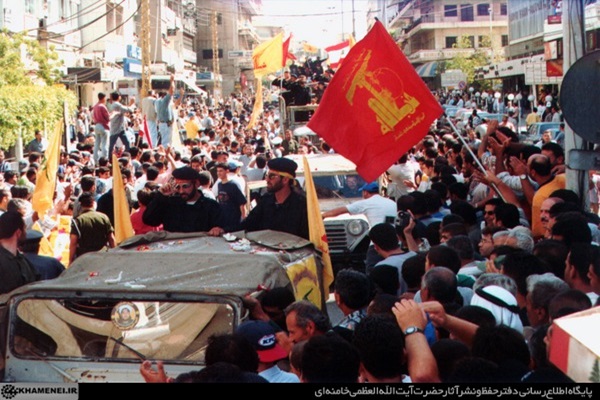.png)

Lt Gen Syed Ata Hasnain is a former Commander of India’s Kashmir Corps and Chancellor of the Central University of Kashmir.
June 30, 2025 at 8:16 AM IST
The strategic utility of asymmetric, deniable proxy warfare, long favoured by both Iran and Pakistan, is coming under intense scrutiny.
In recent months, Iran’s vast network of regional proxies, once considered its strategic depth, has buckled under the weight of Israel’s conventional military superiority and unrelenting operational tempo. Similarly, Pakistan’s long war of attrition against India in J&K, fought through terrorist proxies, ideological indoctrination, and deniable cross-border support, has been steadily degraded, not through spectacular retaliation, but through sustained and calibrated national effort, the Indian model.
Both cases offer critical insights into the limitations of asymmetric warfare, particularly when it confronts persistent state-level responses bolstered by political will, technological superiority, and long-term planning.
For over three decades, Iran treated its proxies as a substitute for conventional power.
Hezbollah in Lebanon, Hamas in Gaza, the Houthis in Yemen, and Shia militias in Iraq and Syria formed the pillars of its deterrence architecture. These groups allowed Iran to operate below the threshold of open war, exporting disruption while shielding itself from direct consequences.
The brilliance of the concept and doctrine cannot be denied. The Islamic Revolutionary Guard Corps of Iran ran these operations with a strategic intent of dominating the crucial Levant territory and the important West Asian sea passages.
Yet, the concept is now collapsing, if not already collapsed.
In 2024–25, Israel demonstrated that conventional strength, particularly airpower, precision strike capabilities, and intelligence integration, can dismantle such networks with methodical intensity. In the latest Israel-Iran conflict, Tehran's missile and drone attacks, though dramatic, failed to change outcomes on the ground. Its proxies, especially in Gaza and Lebanon, are reeling.
Pakistan’s Strategy
Pakistan’s use of asymmetric warfare against India follows a similar template, one that predates Iran’s regional strategy.
From 1989 onwards, Pakistan sponsored terrorism, armed and trained irregulars, infiltrated jihadist cadres, and established financial and ideological networks within J&K. The aim was never conventional confrontation, it was to destabilise, internationalise, and eventually, delegitimise Indian control over Kashmir through persistent, deniable violence; the doctrine of ‘thousand cuts’ as conceptualised by Zia-ul-Haq.
However, in contrast to Iran, which relied almost exclusively on proxies due to conventional inferiority, Pakistan always paired its proxy doctrine with the threat of conventional escalation, and later, after 1998, nuclear deterrence.
This approach meant that terrorist violence on Indian soil was often followed by diplomatic ambiguity and veiled military threats, backed by nuclear red lines. It was clever, persistent, and for some time, effective in draining Indian resources and denting political bandwidth. It actually proved fairly exasperating for the Indian political and military leadership, but innovative counters were found.
India’s Response
India’s response to Pakistan’s proxy war was far more constrained and not over the top. Yet, it was far more strategic and all encompassing than what Israel has done against Iran’s proxies. It involved no large-scale regional wars, but rather calibrated control over infiltration routes, through aggressive counter-infiltration operations and border surveillance.
To further erode the human resource elements, efforts focused towards the disruption of recruitment ecosystems and ideological pipelines inside Kashmir.
Networks of different kinds were targeted, including financial and logistical arteries of separatist and militant groups, overground workers and illegal terror financing.
A fairly effective outreach programme, coupled with information campaigns and ground-level governance, undermined the legitimacy of Pakistan-backed narratives. When needed, India demonstrated credible punitive capability, as seen in the surgical strikes post-Uri (2016) and the Balakot airstrike (2019).
These were not about escalation, but about re-establishing deterrence without losing narrative control.
India achieved progressive success not by overwhelming retaliation alone, but through sustained, multi-domain pressure: political, informational, financial, and kinetic.
Both Iran and Pakistan are now facing the consequences of over-reliance on proxies against powerful armed forces. Iran's proxies are suffering battlefield reverses, reputational damage, and in some cases, the collapse of local support, notably in Gaza. Pakistan’s assets in Kashmir, especially foreign terrorists, ideological influencers, and OGWs, have been severely diminished. Indigenous militancy persists at a much low intensity, but its linkages with Pakistan are increasingly fragmented and exposed.
Diverging Futures
Yet there’s a key distinction between the Iranian and Pakistani models. Iran’s failure is tactical and recent, it has not yet accepted the need to rebuild conventional capability. Pakistan’s model, though battered, remains institutionally embedded in its military and intelligence doctrines. It may recede, but it is unlikely to vanish.
Iran is likely to rebalance towards conventional forces, especially air and naval power, recognising that proxy warfare cannot win strategic victories. It will retain proxies for grey-zone operations, but avoid overdependence, remembering the fact that for many years this obtained for it a favourable situation. Seeking Russian and Chinese support to modernise its regular forces is a long haul, subject to many imponderables. Effectively, the choice is limited.
Pakistan could reduce overt infiltration but increase cyber, drone, and digital propaganda warfare. As assessed, it may shift focus to instigating communal and ideological agitation in India’s hinterlands, especially using social media. It won’t give up the proxy war doctrine as part of its broader security strategy because that is the only way to retain its relevance in J&K. And, it has little or no scope for expansion of its conventional war machine, which is backed by nuclear weapon capability.
Strategic Path
India must not assume that Pakistan’s proxy war is over. While the methods may evolve, the strategic intent remains intact.
To stay ahead, India must strengthen counter-drone and cyber intelligence, particularly in vulnerable border regions. Simultaneously, it should expand psychological and informational campaigns to deny Pakistan any narrative space among disaffected segments.
Diplomatic engagement with Gulf and Central Asian nations must deepen, shrinking Pakistan’s support base even within the Islamic world.
At the military level, conventional deterrence must be modernised with precision-strike capabilities for proportional responses. Most critically, India must build clear strategic signalling, making it evident that any proxy attack will draw domain-specific retaliation, proportionate but unmistakable, and on India’s terms.
Proxy war, once the strategic lever of the weak, is no longer immune to exposure or retaliation. Iran’s experience has shown its limitations.
Pakistan's model, too, has lost much of its potency, particularly against a politically and militarily assertive India. In the near future, the relevance of sponsored asymmetric war will depend not on how cleverly it is masked, but on how decisively it is countered.
For India, the doctrine of strategic patience, coupled with tactical assertiveness, has proven effective. Although the models in South Asia and West Asia have been different, the antidote has been nearly similar.
Tweaks in proxy war doctrines can be expected, and strategic agility to meet this should remain our effort.




